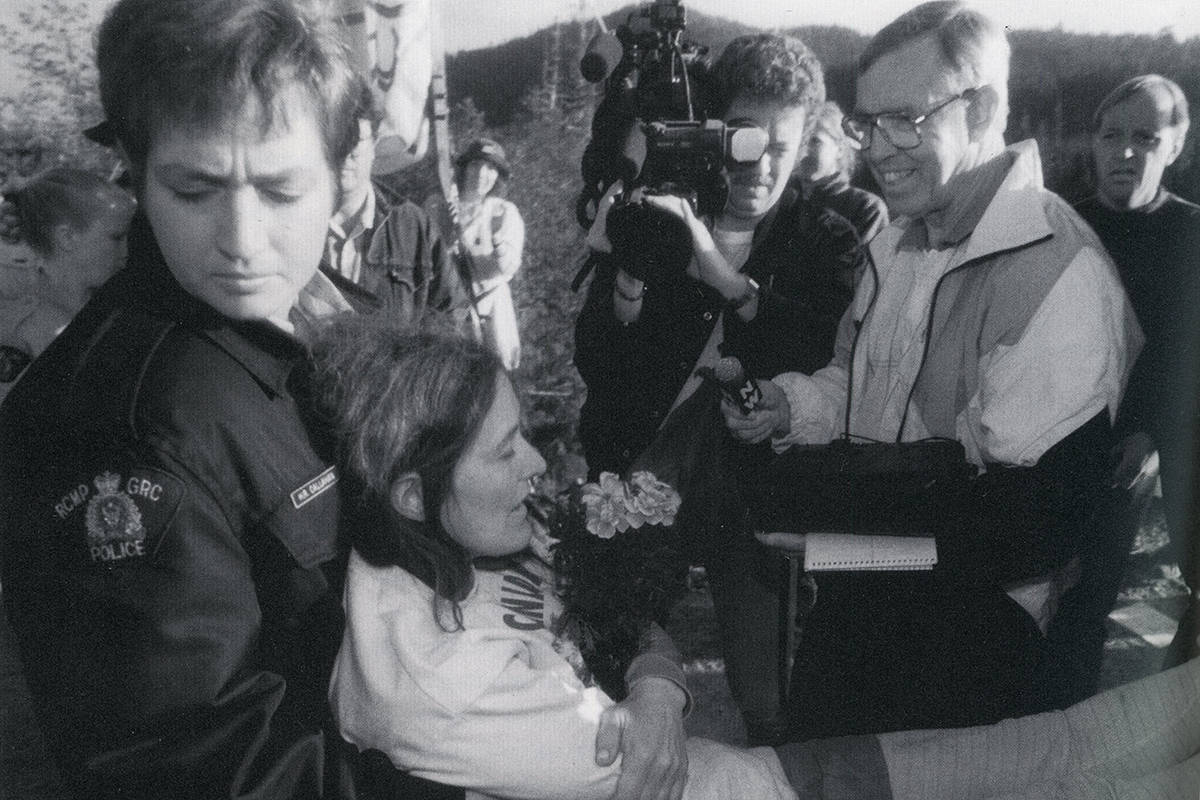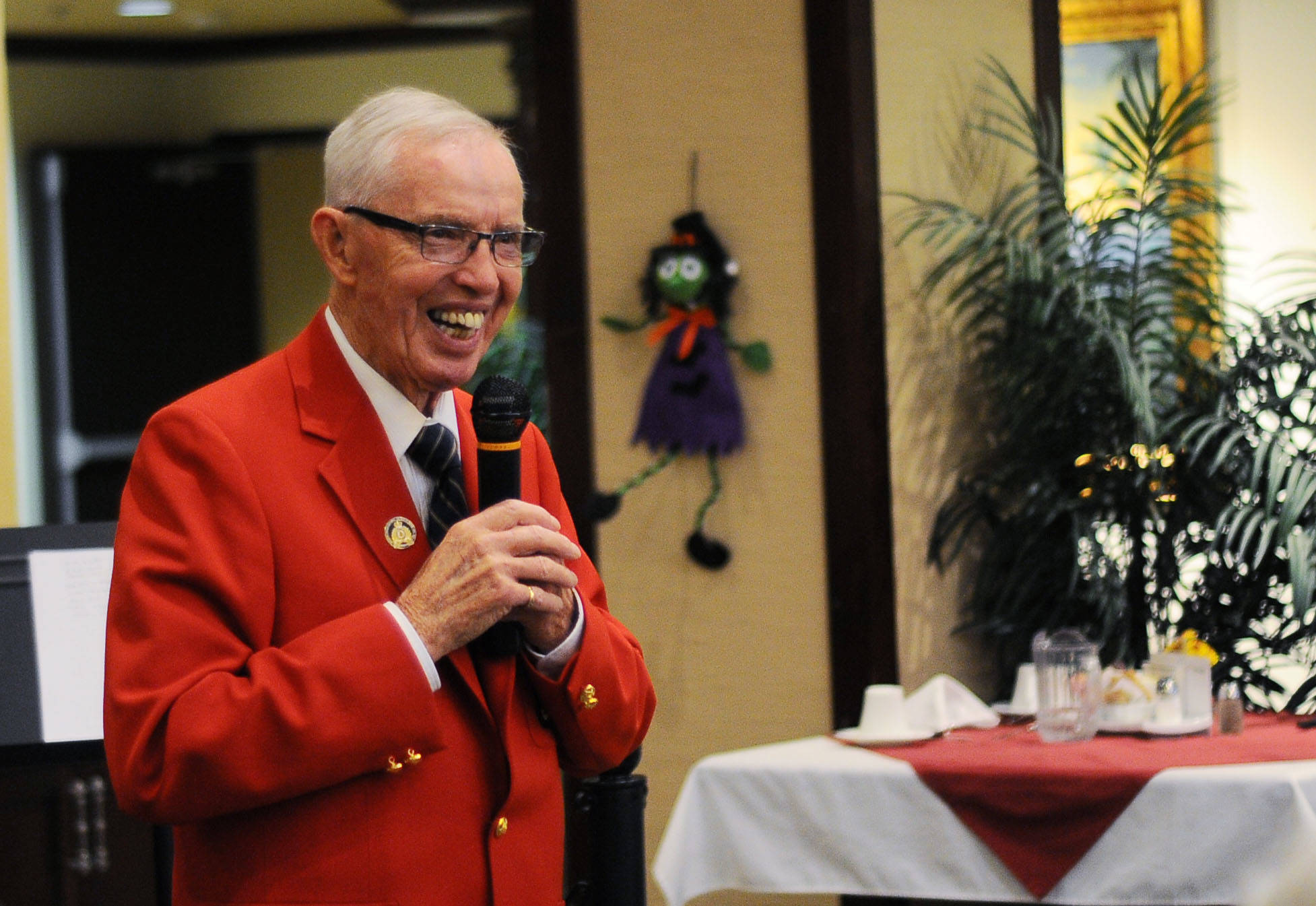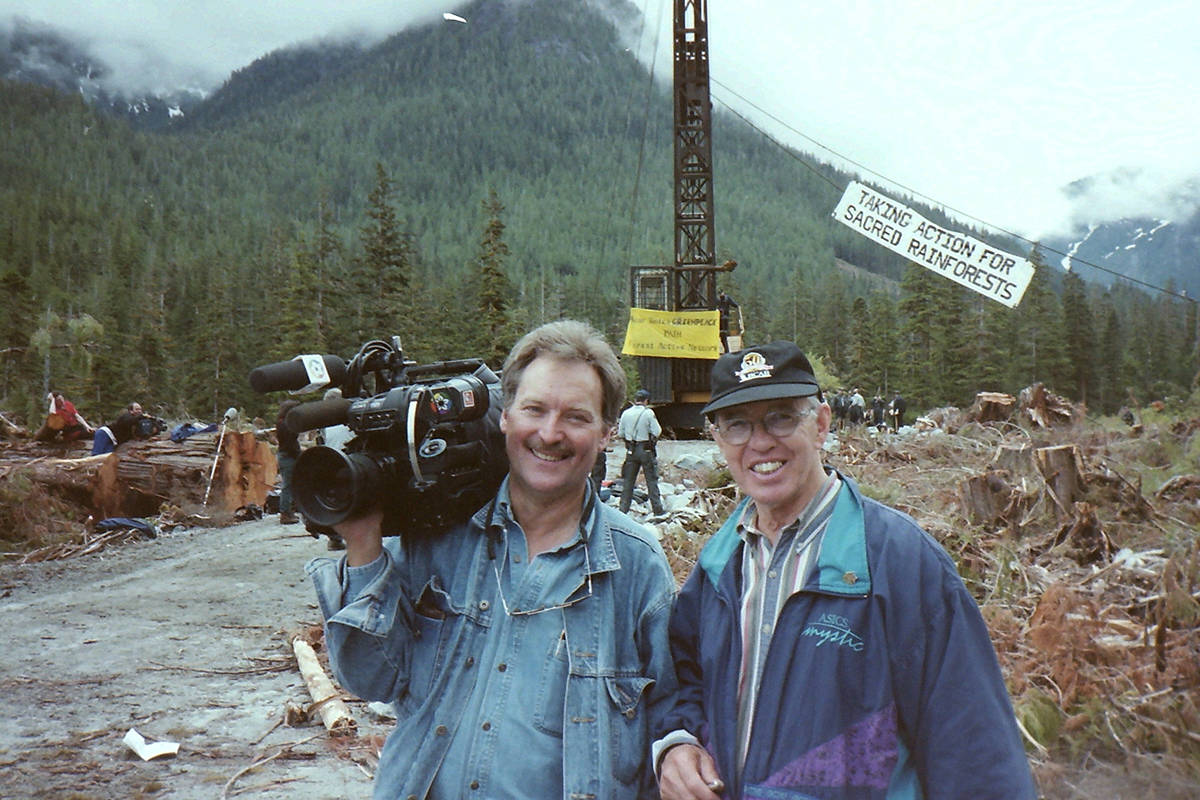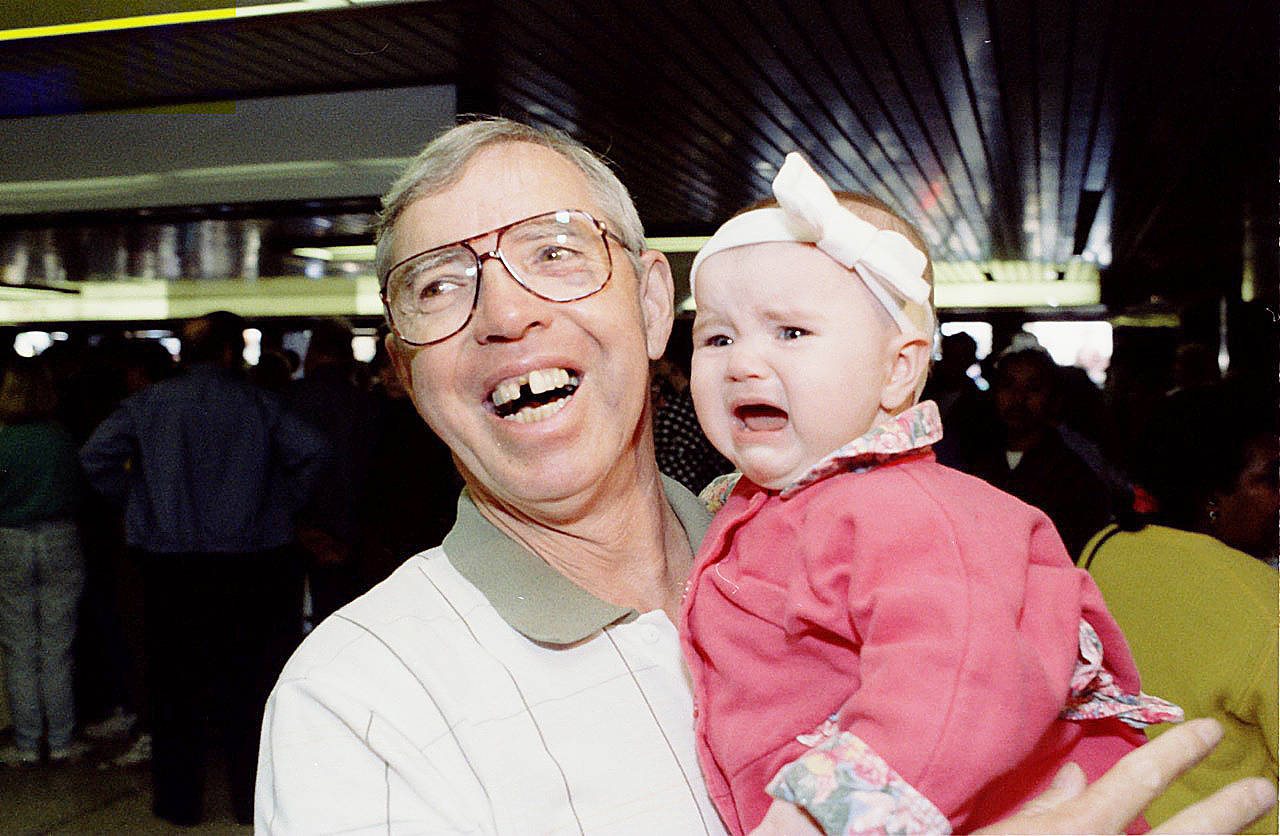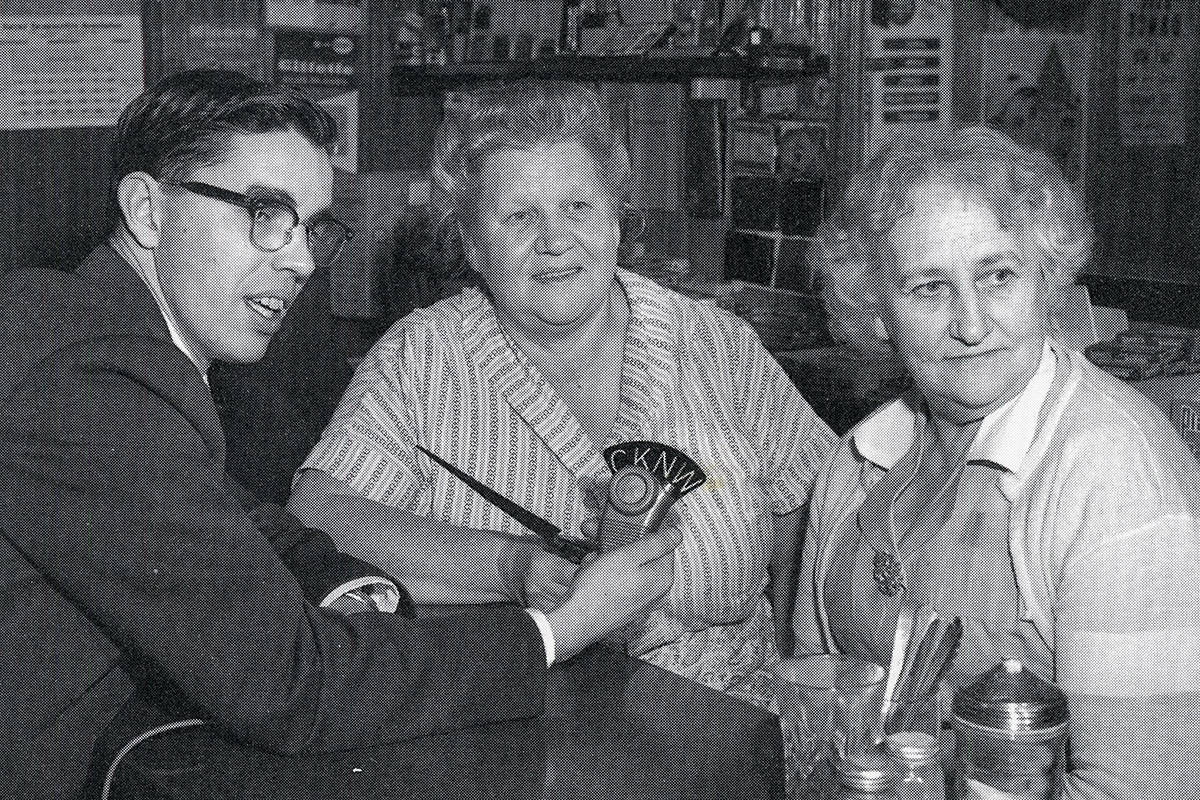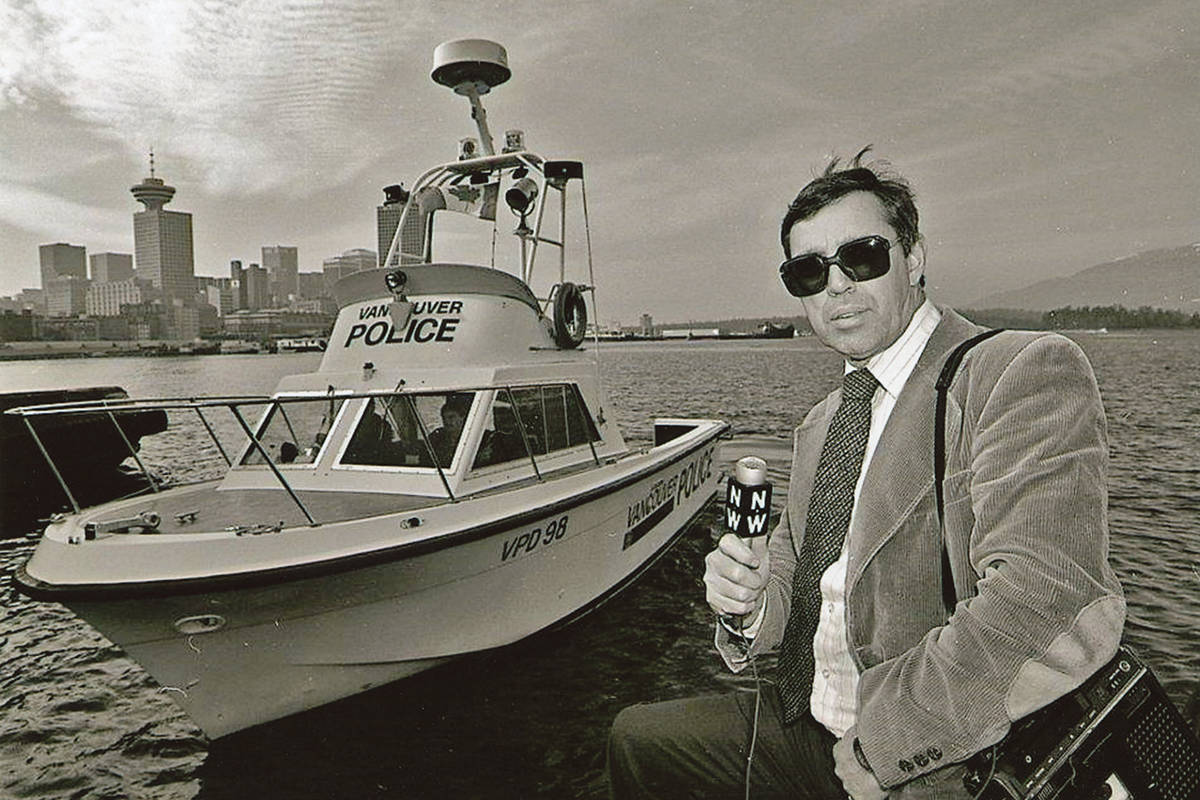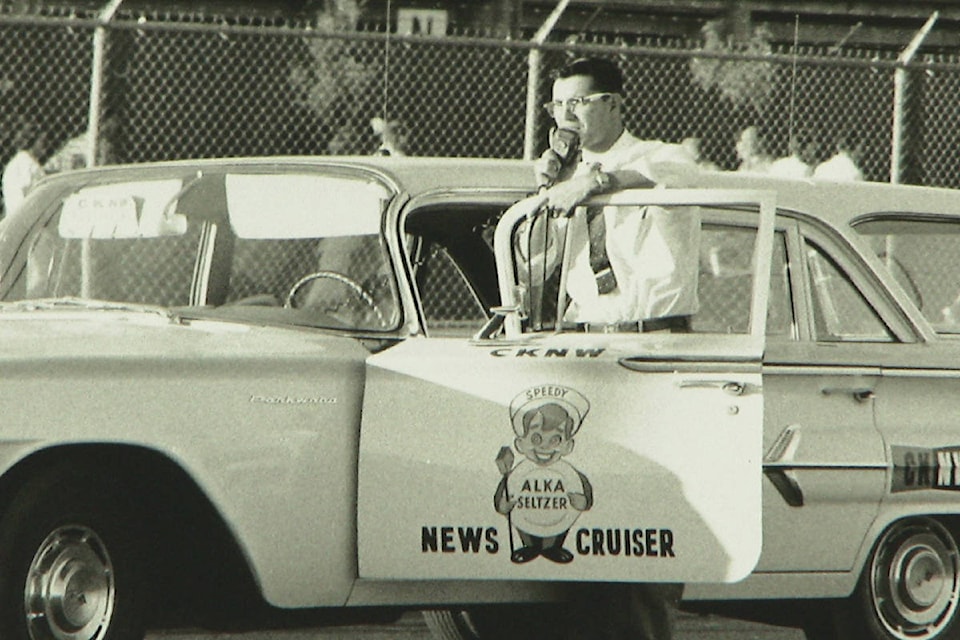From exposing political scandals at the highest level of the provincial government to alerting the public that a serial killer was on the loose, there was one voice that always seemed to be the first to break the story.
SurreyŌĆÖs George Garrett has published a 285-page memoir ŌĆō George Garrett Intrepid Reporter ŌĆō that takes readers through his upbringing on a Saskatchewan farm to his time as one of B.C.ŌĆÖs most respected reporters.
The book goes behind the headlines he produced in his 43-year career in radio, mostly for CKNW, and is accompanied by harrowing, and occasionally humiliating, stories that happened along the way.
If something with provincial significance happened in British Columbia from 1956 to 1999, Garrett likely had a front-row seat.
Crafting the book almost entirely from memory, Garrett writes about his sometimes peculiar way of getting a story, such as the time he became a tow-truck driver in order to expose a forgery scheme. Another time, he posed as a security official to gain access to the area where securities were kept at the Vancouver Post Office. And another time, he impersonated the friend of a hostage in a prison riot by offering her a gift of flowers when she was taken to hospital.
In an interview with Peace Arch News Wednesday, Garrett said thereŌĆÖs one story, that when reflected upon, makes him smile.
ŌĆ£Some of them, youŌĆÖre glad that you had the story, but thereŌĆÖs an impact on people as well,ŌĆØ he said.
Garrett spent a month riding along with the Vancouver Police Department, ŌĆ£which is unusual,ŌĆØ and always had his tape recorder ready to roll.
During one outing, Garrett and an officer were dispatched to a multi-vehicle collision that involved an impaired driver. On arrival, Garrett quickly recognized the suspect, Supreme Court Justice Davie Fulton.
ŌĆ£IŌĆÖm standing between Judge Fulton and the police as theyŌĆÖre saying theyŌĆÖre going to impose a 24-hour suspension and his vehicle will be impounded,ŌĆØ Garrett said.
ŌĆ£Fulton said, ŌĆśVery well, if you do this to me, I shall not be a judge anymore.ŌĆØ
Garrett said the officers began assisting Fulton into their cruiser, and Fulton, Garrett said, told the officers to ŌĆ£go to hell.ŌĆØ
ŌĆ£The headline in the paper was: ŌĆśGo to hell,ŌĆÖ judge told cops,ŌĆØ Garrett laughed.
Another memorable tale, but less humorous, was the night he was assaulted while covering the Rodney King riots in Los Angeles in 1992. Garrett said he was approached by a group of men who demanded his car keys.
ŌĆ£I said, ŌĆśYou donŌĆÖt want to bother with an old guy.
ŌĆ£IŌĆÖm from Canada.ŌĆÖ They said, ŌĆśIt doesnŌĆÖt matter, youŌĆÖre white,ŌĆÖŌĆØ Garrett said.
One of the men struck Garrett, breaking his upper jaw, causing him to bleed profusely. An onlooker stepped in and drove him to the hospital.
ŌĆ£I was lucky to get out of there alive.ŌĆØ
RELATED:
RELATED:
Those who were familiar with GarrettŌĆÖs body of work, particularly those in law enforcement, knew of his profound respect for, and working relationship with, police officers.
Although he reported on the numerous misdeeds of officers in his four decades of work, he has always kept a certain admiration for the men and women in blue.
ŌĆ£If I did a story about a bad cop, I never had a problem because the good cops didnŌĆÖt want them around,ŌĆØ Garrett said, adding that he built trust with officers by not disclosing information that could hamper an investigation.
An example, Garrett said, was when he was covering the crimes and conviction of Clifford Olson.
Olson confessed to killing 11 children and young adults between the ages of nine and 18 in the early 1980s.
It was Garrett who first publicly described the string of similar murders, before OlsonŌĆÖs capture, as the work of a serial killer.
ŌĆ£I was the first guy to say that it could be a serial killer. I did that with approval of my boss, Warren Barker. But I knew that it would frighten the community, but at the same time, Warren and I agreed that the community should be made aware that there is a serial killer likely at work,ŌĆØ said Garrett, whose book includes a chapter titled The Monster, Clifford Olson.
ŌĆ£We ran it, and it caused the national media to become interested and the RCMP were forced to hold news conferences every day.ŌĆØ
After OlsonŌĆÖs capture, Garrett learned through one of his many trusted sources that the RCMP agreed to pay Olson $10,000 for each location of the hidden bodies.
ŌĆ£I didnŌĆÖt put it on the air though,ŌĆØ Garrett said, adding that he phoned crown prosecutor John Hall at home to confirm the information.
ŌĆ£I said ŌĆśJohn, I donŌĆÖt want to bother you at home but this is important. I heard thereŌĆÖs $10,000 per body offered to Olson,ŌĆÖŌĆØ Garrett recounted.
ŌĆ£All he said was ŌĆśGeorge, I think IŌĆÖd put that on the back-burner for now.ŌĆØ
Garrett agreed not to run with the information.
ŌĆ£The day Olson pleaded guilty, John Hall walked by my seat in the court house and said, ŌĆśYou can take that matter off the back-burner now.ŌĆÖŌĆØ
OlsonŌĆÖs wife ultimately received $100,000 after he co-operated with police, the 11th body being what Olson referred to as a ŌĆ£freebie.ŌĆØ
Although GarrettŌĆÖs memoir recounts his steps as a journalist, he also delves into the personal details of his life. He shares the heartbreaking loss of his son in a canoeing accident, and his wifeŌĆÖs devastating AlzheimerŌĆÖs diagnosis.
The authorŌĆÖs proceeds from the book are to be dedicated to a cause close to Garrett ŌĆō the
Garrett will be doing readings and signings of his book at Black Bond Books in the Semiahmoo Shopping Centre March 9 at 1:30 p.m., and at Haney Place Mall in Maple Ridge March 16 at 1:30 p.m.
His book George Garrett Intrepid Reporter, published by Harbour Publishing, is available
